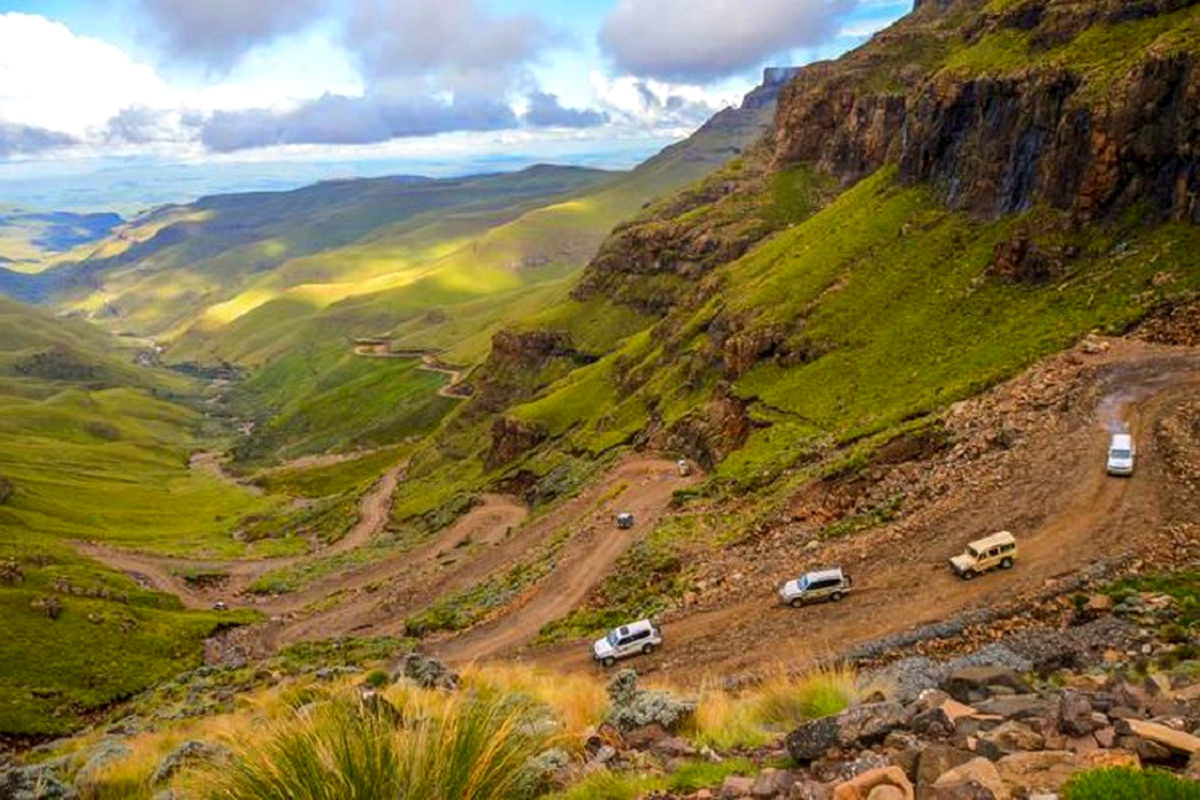WHEN driving through Lesotho’s mountainous terrain, there are certain precautionary measures to be taken into account as it can be extremely challenging and dangerous.
society
May 10, 2021
KABELO MASOABI
4 min read
Dangerous roads on Lesotho's highest passes

The Sani Pass
To mention but a few, a driver should be wary of both the ice and snow on the road in winter, free roaming livestock, slow moving trucks and the widespread herdsmen.
The roads and passes themselves offer varying challenges and can test driver and vehicle alike.
For example, the Cheche's Pass is regularly under snow for several months in a year.
With a summit altitude of 2 553m ASL (Above Sea Level), the pass connects Maseru with Thaba-Tseka on the A3 route together with a string of other passes.
A 4x4 leisure traveler and tour guide, Komane Theko, describes it as a major pass covering 19 km and includes a huge number of bends, corners and curves - 122 of them in all.
“The pass is tarred which increases traction in wet weather, but when ice forms on the road, things can quickly become dangerous.
“The Marakabei Lodge lies at the western end of the pass at a river crossing. This little river flows northwards to form one of the numerous streams that feed the Mohale Dam,” he also noted.
On the A1 route lies Khalo La Lithunya (Pass of Guns).
The pass connects Mokhotlong in the east with the northern villages, as well as the Afriski Mountain Resort via the main route - the A1.
“This is an extremely high altitude pass that you climb at an altitude of 3 246m ASL. Despite the extreme altitudes, the pass itself only contains 16 bends and curves and only two have an arc greater than 90 degrees.
“In colder months, the pass is covered in snow and ice. If you are not driving a 4WD (four wheels drive) vehicle, it's best to choose an alternative route or wait a day or two for conditions to improve. Snow is less of a problem than ice. Ice creates extremely dangerous conditions on tar (much worse than gravel), which can quickly cause a total loss of control.”
Theko who frequently drives around the country escorting tourists says another mega pass by any standard is the Kotisephola Pass running on the A14 route. The pass is 32km long with a summit height of 3 244m ASL.
“Travellers from the coast who have not had a chance to get acclimatised to the heights might suffer severe headaches and nose bleeding. This is the second highest pass in Lesotho and is also commonly referred to as the Black Mountain Pass.
“Packed into that length are a total of 139 bends, corners and curves of which eight have angles in excess of 90 degrees and six of them are hairpin bends. The pass is subject to lots of snow in winter and ice on the roadway which make things highly dangerous, even for 4WD vehicles,” Theko says.
Kotisephola Pass is virtually and extension of the Sani Pass, separated only by a short 6 km plateau.
It connects South Africa, KwaZulu-Natal province with the main southern town of Mokhotlong.
Lekhalo La Baroa is another big pass and is located on the A3 main route between Maseru in the west and the much smaller village of Fosi in the east. It runs over a distance of 11.9 km.
“The pass is also commonly known as Bushman's Pass or Bushmen's Pass. Most maps use the spelling Bushman's, but the official sign at the summit is spelled as Bushmen's Pass," Theko also says.
The pass has 65 bends, corners and curves compressed within its length and with a summit height of 2 277 metres ASL, it receives regular snowfalls.
During very cold conditions there is always ice on the road, which driving extremely dangerous - even for 4WD vehicles.
Enjoy our daily newsletter from today
Access exclusive newsletters, along with previews of new media releases.
“Being one of the main routes in Lesotho the road carries a steady flow of traffic. Be wary of large trucks and buses that need the whole roadway to negotiate the sharper bends,” Theko also warns.
Last but not least there is the Lekhalo La Thaba Putsoa. Theko describes it as the longest pass on the tarred A3 road located between Maseru and Mohali at 18.3 km.
“This is another high altitude pass reaching a maximum of 2 642metre ASL. The pass is also commonly called the Blue Mountain Pass. This is one of the coldest parts of Lesotho in winter and summer.
“There are plenty of bends, corners and curves to keep you busy - a total of 95 of them and of those, 12 are greater than 90 degrees, which include two hairpin bends.
“The road is in a good condition and vehicle can be driven on the road, but the usual Lesotho cautionary applies. The area can be subject to severe electrical storms in summer months.”
Tailored for you






